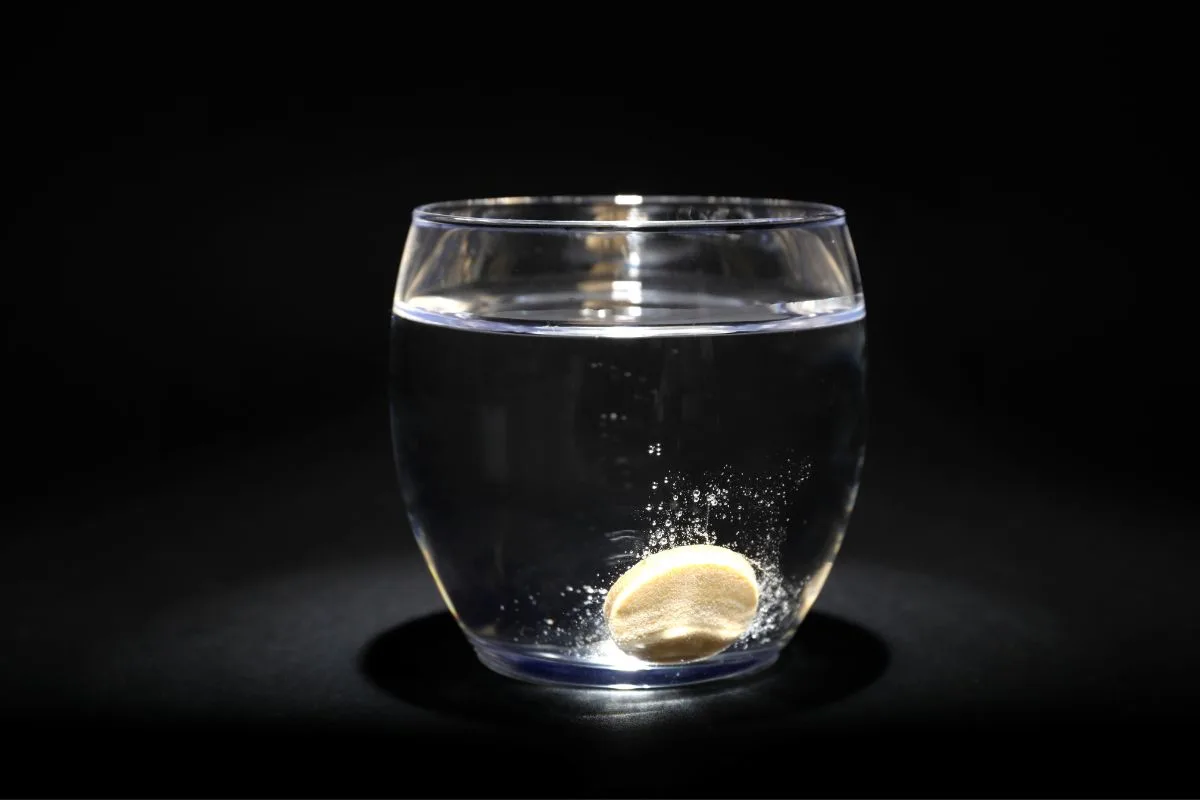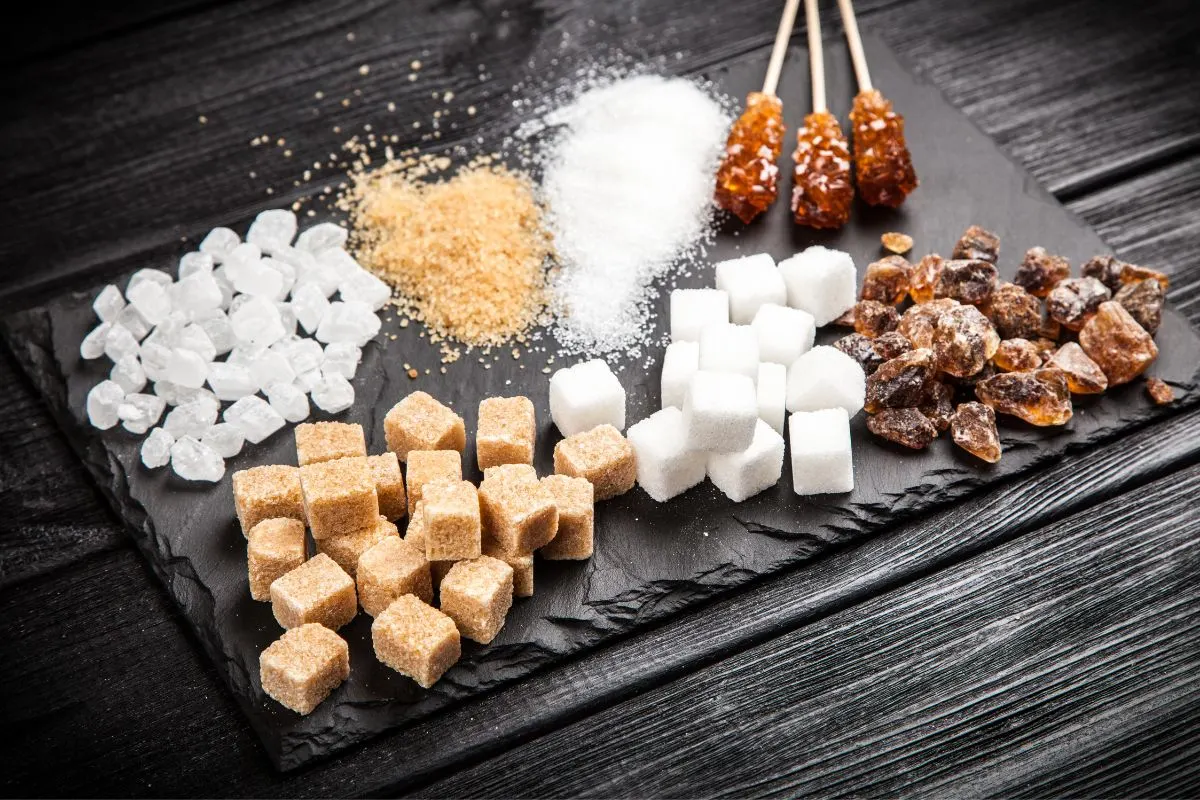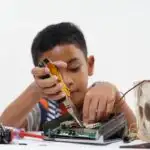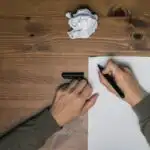No two children are exactly alike, and that includes the ways in which they learn.

It is imperative that all teachers include a variety of visual, audible, and kinesthetic activities for their students so everyone can understand their subjects thoroughly.
And there’s no better form of kinesthetic learning than science projects. They are completely hands-on, they’re super informative, and they’re also just a lot of fun. And we know that always helps.
Read on for some amazing science project inspiration.
1. Caffeine & Computers
It is generally believed that caffeine helps us function better, right? Don’t adults always need a cup of coffee to start their mornings?
Well, put this notion to the test by seeing just how much more productive you are on the computer after a high caffeine-content drink.
Obviously, you’re probably not going to want to give 12-13-year-olds several cups of coffee, so we suggest opting for something like Coke instead. Or getting the child to monitor Mom or Dad instead.
2. Bridging The Gaps
Who knew that just a few pencils and some small rubber bands could be so interesting? Using these tools your students can attempt to build a bridge inspired by Leonardo Da Vinci.
To make things a little more complicated, why not try adding a time constraint to the mix or seeing who can use the most pencils without the structure falling over?
3. Generating Amazement
Any 7th grader is sure to be impressed with themselves after constructing their very own generator.
It can massively help to improve the student’s magnetic and electrical principle understanding and can even be made from just a few readily available components.
4. Blowing Bubbles
In this super interactive science experiment, students explore whether or not air temperature affects whether bubbles will form.
Along the way, you’ll also look at just how long the bubbles will last before they pop too.
This is really engaging and a whole lot of fun. You can be sure that students will find a new love for science with this enthralling experiment.
5. Make Your Own Chapstick
This is not only a fun experiment, but a handy piece of information to know! Students will gather a selection of natural materials that when mixed together create a chapstick or lip balm.
So, not only will they learn more about ingredients but they will also never have to worry about chapped lips! Win-Win.
6. Bacteria Buddies
There isn’t a better way to learn about bacteria growth than to watch it happen yourself.
This is sure to be a very interesting project for any student that will also help them better understand the subject.
And it’s never been easier to do. Simply pop the container or surface you wish to observe in a large body of water and observe it over the course of 14 days.
7. Helium Voice Changes
If you’re looking for a project that is both informative and endlessly entertaining you won’t find a better option than this one. In this project, you’ll take a closer look at how and why helium changes our voices.
Prepare for a lot of squeaky sounds and non-stop laughter for this one.
8. Lego Coding
If your student shares a love for both computers and Lego, then you won’t find an experiment more suited to them than this one.
This hands-on approach allows students to learn the basics of computer coding through the use of their Lego. Who knew that a staple child’s toy could also help you to understand the binary alphabet and algorithms?
9. Rainbow Layers
With this pretty and colorful experiment, children can learn quite a lot about liquids. Especially in terms of their different densities and how that prevents them from mixing together.
Using just a few different materials, your student will create a glass full of perfectly layered liquids, each a different color from the other.
10. A Helping Hand
You know the saying I only have one pair of hands. Well, with this experiment, you’ll add an extra hand to the mix. Yep, you’ll be producing your very own robotic hand.
Once you’ve made your robotic hand, be sure to test it out. Try using it to take a drink or to put away a few toys. You’ll be surprised at how handy it is. Pun intended!
11. Can Crushing
You don’t need big machinery to completely crush a can…you simply need air. Well, air pressure, to be more precise.
By following the instructions set out for this experiment, students can play around with hot and cold water to cause pressure to build up in the can.
It’s a very informative option but there’s something so satisfying about watching that can crumple!
12. The Sun As An Oven
Hands-on learning sure is fun, but it’s even better when you can devour your project once it’s done, right?
Students will enjoy making smores using nothing but a pizza box, some aluminum foil, and a few ingredients.
But we’re sure they’ll enjoy tucking into them afterward even more!
13. Juice Balls
No, this isn’t some form of wizardry or mermaid magic, students really can turn a liquid into a ball with the help of science.
This experiment helps to teach youngsters about spherification, pH levels, and more. It’s a great way to make a fairly complicated subject much more accessible for younger minds.
14. Acid Rain
Learning about corrosion in your science lessons? Then why not opt for this super fun experiment that explicitly teaches your students how this happens and how pH levels play a massive part in corrosion?
Simply pick your acidic liquid and monitor any changes that start to happen.
15. Making Domes
This super fun hands-on activity helps to teach children about geodesic domes and how they can support a surprising amount of weight. All you need is a few basic household items and some brain power!
And what’s great is that this project can be modified to be appropriate for a range of different ages.
16. Live Climate Change
Climate change is something that everyone needs to learn about, so why not put it into practice for a science fair project?
Using a few household items and a bit of water and some help from the sun, children can see how heat can affect water and release gas.
17. Charcoal Power
Learning about liquid water purification systems can be a little tedious, right? Well, you make things a little more exciting with this fun experiment using some charcoal and water.
Students can watch as the charcoal absorbs and removes molecules from the water for a clearer understanding of the subject.
18. Bath Bomb Bonanza
Who doesn’t love a good bath bomb to help them unwind? We all know that they’re relaxing. But do you know whether different water temperatures can affect the amount of bubbles they produce?
Find out with this fun and interactive experiment.
19. Creepy Apple Faces
Looking for a spooky science experiment that would fit perfectly around Halloween? Then why not create some seriously creepy faces using apples and a few ingredients you’ll have lying around?
It helps teach children all about the mummification process and is a lot of fun too.
20. Growing Germs
Teaching your child or student about germs and how they aren’t always visible to the eye. Well, this is sure to open their eyes to the germs all around them. Yes, terrible pun intended.
All you have to do is pick a few different surfaces to swab with a cotton bud and then leave them in some agar.
It won’t take long for them to grow and it’ll highlight how germs can be found almost everywhere.
21. Inspecting Insects
Learning more about animal observation? This experiment will be the perfect option then. Here, your students will learn all about insect behavior, in particular, ants.
You’ll observe and record the behavior of these insects when they are subjected to certain temperatures.
22. Color Associations
Can colors have an impact on our learning and behavior? Find out in this fun experiment that involves index cards and markers in a variety of different colors.
You may find that information is much easier to retain using specific colors. Pretty cool, right?
23. Pinball Is Fun For All
You can have endless fun with a pinball machine, but imagine creating your very own! This experiment teaches students necessary engineering and design process skills in a fun and inventive way.
And all you’ll need is a little creativity and a few staple art supplies.
24. Candy Classification
Classification skills are pretty imperative within science. It can help students to distinguish the main differences and similarities between a particular group or subject.
And what better way to practice and develop these skills than with some delicious candy they can devour once they’re done?
25. Oxidation Observation
Perfect for kinesthetic and visual learners alike, this interactive experiment helps to highlight the oxidation process to younger students.
And all you’ll need are a few household items and some cups of water. Place a penny in a few different types of water and observe how the penny reacts over time.
26. Melting Ice Mixtures
This experiment is an amazing way to help students understand the process of solids transforming into liquids. It will also highlight the speed at which this happens.
Add a few extra ingredients to a bowl of ice cubes and monitor how long it takes for them to turn to water. Super easy but very informative!
27. Air-Powered Car
Set to finding out whether a balloon can power a car with this fun and interactive experiment. You’ll want to compile a list of hypotheses and then put them to the test!
You’ll also get to create your very own car out of cardboard which is a lot of hands-on entertainment.
28. Preservative Spices

Though the objective of this experiment may sound complicated (determining the effective concentration for antimicrobial food preservatives) it is actually a pretty simple process that helps teach your students a great deal.
All you’ll need is some scrumptious spices and some chicken broth! Mix the two together and observe how they react to one another.
29. Dissolving Medications

Put a variety of different pain-relief medications to the test by seeing how quickly they dissolve.
Since pain relief must dissolve in order to pass through the bloodstream to become effective it helps to teach students how these medications work, and also gives you a handy guide as to which options out there are the most effective!
30. Water Erosion
This experiment is a great way to show students real-life applications firsthand.
From this, you should be able to observe how water and earth come together to create the incredible landscapes across the world.
All you’ll need is some sand and a bit of water and then simply observe how this affects the sand. You can then repeat this process using a few different methods to see if there are influencing factors too.
31. Golfer’s Dream

Learning about power, speed, and velocity? Have an active passion for golf or know some friends or family members that do? Then why not apply scientific knowledge to the game?
You’ll need a few helping hands and a few tees of differing heights to complete this one. Watch and observe as your helpers take their swings and see if longer tees make an impact on your results.
32. Are All Sugars Created Equal?

Spoiler Alert – the answer is no. The body processes different sources of sugar in slightly different ways and this experiment is a great way to help your children or students understand this.
Simply pick a few sugary items and test and observe the results when they react to reagent tablets.
33. Manicure Madness

Does your child or student have a love of nail varnish? Then why not opt for this super fun beauty-inspired experiment?
Select 10 different nail varnishes in different colors and brands and paint each fingernail a separate shade.
Then test and observe just how long they last. Do certain options chip easier than others? Well, that’s for you to find out.
34. Portable Solar Energy
Learning about different types of energy or more sustainable options? This experiment might be the perfect option for you if you are.
During this project, you’ll make your very own pocket-sized solar energy sauce that can actually charge your smart devices. Pretty impressive, right?
35. Fun With Fonts
For this project, you’ll be looking at whether different fonts can help you to retain information better than others.
All you’ll need is a computer, printer, and some helpful volunteers.
36. Holding Heat

This option is a fantastic and practical way to teach your students or children about how different materials retain heat.
Gather a selection of different cups and fill them up with a hot beverage and observe how long it takes for the drink to cool down.
37. Sounds For Studying

Music is something that inspires and touches us all, but can it also help us to study and focus? Find out with this interesting and informative experiment.
Pick a few different genres of music and then enlist the help of a few willing volunteers and observe and record how they react to learning while listening to music.
38. Factors For Flowers
Learning all about flora and fauna can get a little confusing at times. But this experiment will help to develop any students’ understanding of the subject.
During the project, you’ll be putting certain factors to the test to see if it influences flower growth. Do sugar and salt affect how quickly they bloom? What about the water temperature?
Give this a go and find out!
39. Stationary Stamina
There’s no end to the stationary you can use to write with; pencils, pens, markers, gel pens, and more. But does the implement you use have an effect on your hand movements and fatigue?
Gather a few volunteers and find out!
Final Thoughts
And there you have it, there are so many different ways to make science a hands-on and fun experience for all involved.
No matter what subject of science you are studying there is an option in this list to help deepen your students’ understanding.
Now for the hard question, of all these fun experiments, which will you try first?
Want to read more? Take a look at these 8th grade science projects for your students next.
- Homeschooling In High School: Pros And Cons - February 24, 2024
- How Do I Withdraw My Child From School To Homeschool? - February 23, 2024
- How To Not Go Crazy Homeschooling Kids: A Guide For Frazzled Parents - February 22, 2024









Leave a comment